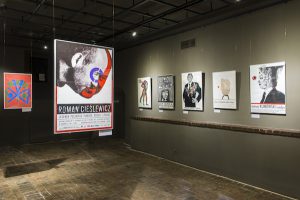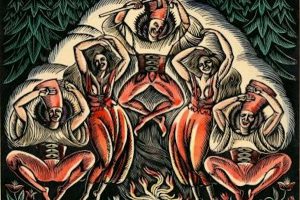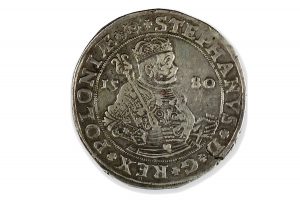The collection contains over 50 thousand paper works from the 15th century to the present day. These are prints in various techniques (from woodcut to mezzotint, aquatint to lithography and many others) and about five thousand drawings, from pencil sketches to charcoal compositions, pastels, watercolors to oil studies on paper. In addition to works of high artistic value or rare, even unique, the department collects objects with more utilitarian functions, including popularization, educational and documentary, hence a significant part of the collection is a several thousand collection of exlibris and prints of iconographic profile (views, portraits, records of events, ornamental patterns or prints reproducing paintings). The latter can be found both in historical collections, mainly the Poznań Society of Friends of Science and in the Gołuchów collection of prints “for Polish history“ and in the largest collection, called the museum.
In the collection of over 40 thousand prints, the works of Dürer (including the Copperplate Passion in excellent impressions), Lucas van Leyden, Jacques Callot, Rembrandt, Stefano della Bella, and Piranesi stand out. Among the particularly valuable and rare works are the Beheading of Saint James the Greater by Wit Stwosz, Madonna on the Throne by Jacob Binck, Hendrick Goltzius‘s Circumcision and Adoration of the Magi, as well as Max Klinger‘s graphic cycles, Käthe Kollwitz‘s prints, and the works of Max Liebermann, Emil Nolde, Edvard Munch, Anders Zorn, Chagall, Toulouse–Lautrec, and Picasso. As far as Polish graphic art is concerned, works from the interwar period of different circles dominate: alongside Skoczylas, Pronaszko, and Hrynkowski, important works come from the Poznań circle, including the artists connected to BUNT. The collection of contemporary graphic art consists primarily of prints from the most significant Polish graphic artists from the first decades after the war, primarily Wejman, Gaj, Lebenstein, Opałka, Berdyszak, and Gustowska.
The collection of drawings is dominated by works of Polish artists from the 19th and 20th centuries. Among the exceptional ones is a set of several dozen sketchbooks of Jacek Malczewski from different periods of his life and unique sketchbooks of Rafał Malczewski. Attention is also attracted by Jan Matejko and Józef Mehoffer‘s cartons, a set of drawing illustrations of Norblin to Ignacy Krasicki‘s Myszeida, Rodakowski‘s studies of the Galician Sejm in Lviv or unique series of Minutoli and Alberti showing Poznań of the first decades of the 19th century. The interwar period collection is mostly the works of Polish artists from the Poznań environment, with the BUNT group, the Warsaw and the Krakow Formists. Post–war work is represented by the works of the second Krakow group, including Kantor and Stern, a unique set of 189 competition scenographic projects (for Piotr Perkowski‘s ballet Swantewit), sketchbooks of Maria Nicz–Borowiak, works of Strzemiński, Lebenstein, Brzozowski, Gierowski, Berdyszak, Zbigniew Makowski and many others.
In this modest collection of foreign drawings we find works of the highest class, such as Rubens‘ Rest on the Flight to Egypt from the collection of Atanazy Raczyński, the 16th century cycle of twelve months by Lambert van Noort, Guercino‘s Raising of the Cross, and Federico Barocci‘s pastel studies of heads. From a later period it is worth mentioning the works of Daniel Chodowiecki, Johann Anton Koch, the Nazarene Julius Schnorr von Carolsfeld, Moritz von Schwind, Julius Hübner, and from the early 20th century: Camille Pissarro and Paul Signac.
A separate and very interesting group is the set of Far Eastern prints and drawings, comprising around 250 Japanese woodcuts from the 18th to 20th centuries, which form a compact set, representative of this genre. Among them is the particularly valuable Kurtyzana with a Cat Kaigetsudo Anchi.
For conservation purposes, paper works are generally not presented on permanent display, therefore to view selected works it is necessary to arrange a visit (by phone or email) to the Print Room in advance.




